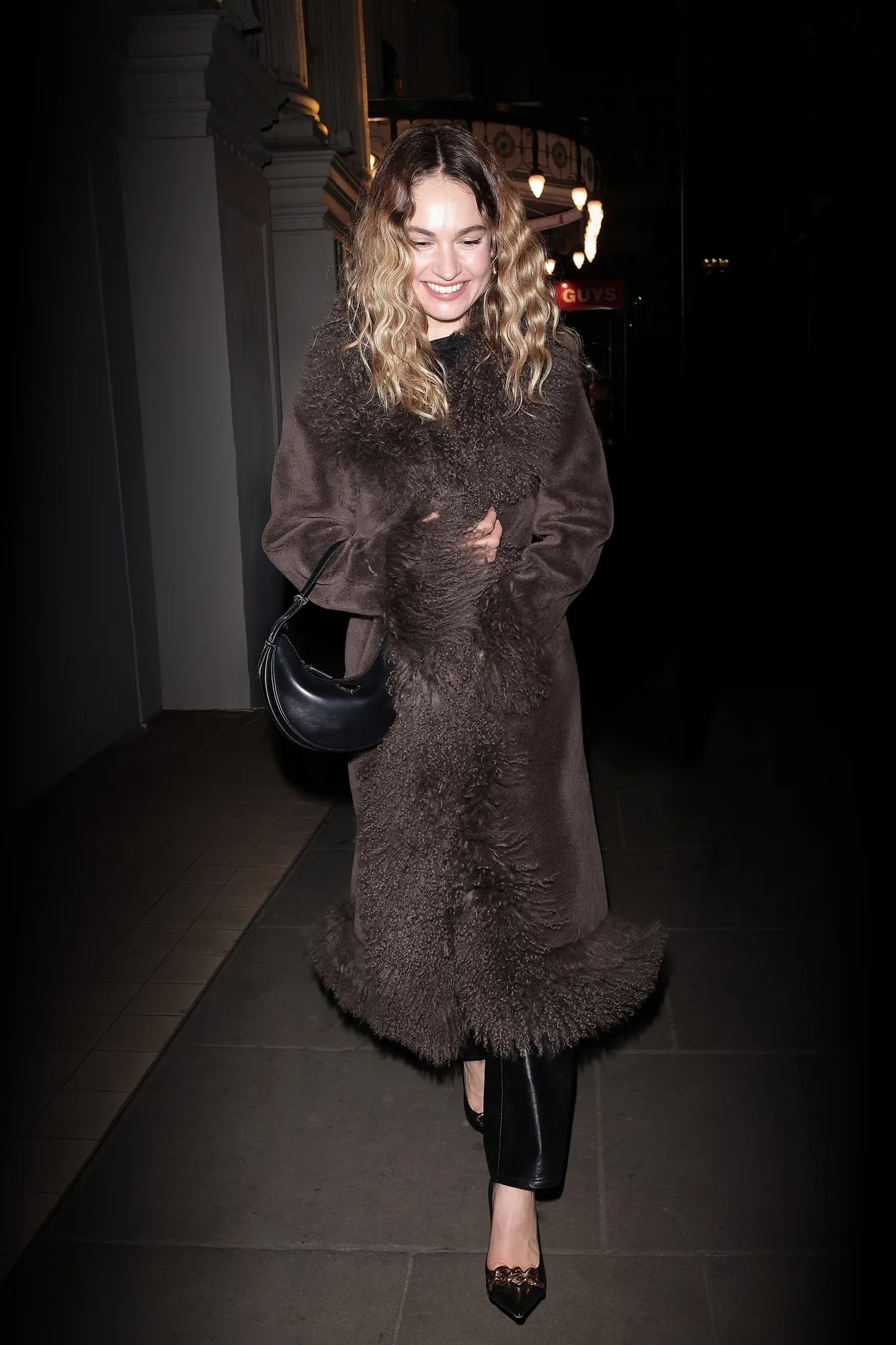Lily James draws from her French heritage to shape her sophisticated style, blending family legacy with contemporary fashion choices.
By Celebrity Editorial Staff
When Lily James stepped out during Paris Fashion Week in a sleek black Dior ensemble—off-shoulder precision, wide-leg tailoring, and razor-sharp slingbacks—fashion editors praised the look for its effortless elegance. Just days earlier, she was spotted in London on March 26 carrying the coveted Prada Arqué bag, further cementing her status as a style authority. What appeared to be impeccable celebrity styling moments have now revealed themselves as something far more intimate: visual love letters to heritage.

Nearly a month after captivating front rows at Dior's AW25 show in the Jardin des Tuileries, James shared the deeper narrative behind her Parisian fashion statement. In an April 3rd Instagram carousel captioned simply "Quand ta grand-mère est française" (When your grandmother is French), the actress interspersed glamorous shots from her Dior moment with vintage black-and-white photographs of her maternal grandmother in her youth.
The revelation transforms our reading of James' sophisticated Parisian appearance. Each element—from the nonchalant positioning of her Lady Dior bag to her softly tousled blonde waves—becomes part of an intergenerational dialogue. What we witnessed wasn't just a celebrity in couture, but a granddaughter expressing her ancestry through modern fashion.
James' grandmother, Marinette Mantle, carries a remarkable story that adds profound dimension to this sartorial homage. Born in France, her grandmother was forced to flee at 11 during the Nazi invasion of Paris. Years later, she would marry James' grandfather, a minister in the Royal Air Force—a cross-cultural romance born from history's darkest chapter.
The actress has long maintained a close relationship with her grandmother, famously bringing her as a guest to Wimbledon in 2016, where photographers captured them holding hands in the Royal Box. This latest tribute, however, elevates their connection to the realm of fashion narrative.
In James' Instagram carousel, we see her lounging on a deep red velvet couch beneath pastoral tapestries, standing confidently beside marble sculptures at the Petit Palais, and embodying quintessential French girl style: minimal, effortless, and exuding quiet confidence. This aesthetic extends beyond her Paris appearance to her London street style, where her recent pairing with the architectural Prada Arqué—the Italian house's geometric answer to everyday luxury—demonstrates her consistent dedication to understated sophistication. Interspersed with her Parisian images are striking photographs of her grandmother—posed by a wooden fence, sitting on sun-bleached rocks by water, and in a studio portrait wearing delicate floral dress and white flower earrings.

The juxtaposition creates a powerful commentary on fashion inheritance. James' Dior moment—think Catherine Deneuve with a dose of Rive Gauche attitude—reads as both homage and continuation. The cinched waist, the bold heel, the barely-there makeup: all whisper of a style lineage passed down rather than acquired. Her London appearance with the Prada Arqué further underscores this narrative, as the bag's curved silhouette and refined hardware echo the elegant restraint seen in her grandmother's vintage portraits.
In an industry frequently scrutinized for commodifying heritage, Lily James presents a masterclass in genuine connection. Her style wasn’t crafted to replicate the French girl aesthetic—it was passed down through bloodline and memory.
As fashion continues to grapple with issues of cultural authenticity and appropriation, James offers a refreshing alternative: a celebration rooted in personal history. By grounding her Dior moment in her family’s narrative, she elevates luxury from mere consumption to a poignant homage.
For those seeking true style inspiration, the most compelling narratives may not lie on the latest runway or in street style galleries, but in the pages of family albums and stories passed through generations. As James so effortlessly exemplifies, the most powerful fashion statements are those woven with legacy—where a timeless Dior suit transcends elegance to become a tribute to heritage. As fashion becomes increasingly layered with questions of authenticity, James reminds us that style often speaks louder when it’s tied to the stories that shape us.
